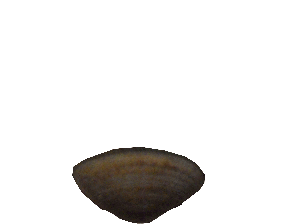With more precise data on the Earth’s climate history needed, what can the skeletons, shells and teeth of marine animals tell us about past environments?

Geologists have been searching for decades for a good “recorder” of past environments to supply data to predictive models for climate change. The chemistry (using both isotopes and elemental ratios) of carbonate sediments has been intensively investigated as they represent the most ubiquitous deposit on Earth. The main constituents of carbonates in marine sediments are coccolithophores, a phytoplankton species mineralising a carbonate shell and living at the top of the water column. When they die they fall down to the sediment surface where they accumulate. While individually microscopic, their abundance assures a massive amount of material is deposited. The chemistry of their shells reflects the effective environmental conditions when they formed (i.e. near the surface), and thus studies were able to reconstruct the mean sea surface temperatures from 65 million years ago to recent (Zachos et al., 2008). This kind of study can give information on mean annual temperatures, with a resolution variable according to the sedimentation rate. Nevertheless, the time resolution would rarely be better than a few thousands of years.
In search for natural probes of the environment with a higher time resolution, numerous other biominerals (hard parts synthesized by organisms, i.e. shells, skeletons, teeth…) were studied to reach not only seasonal but even daily record of the environment, through the use of sclerochronology (the study of increments in the structure of biomaterials, like the dendrochronology is to tree rings). Indeed, the growth rates of these structures are far greater than the ones calculated for sediments, and recent technology advances permit the analysis of materials as small as a few microns (one thousandth of a millimetre), thus reaching a very short time of mineralization.
Amongst all the various species presenting fossilisable structures, molluscs shells and corals skeleton have been particularly intensely investigated due to their abundance in the fossil record and their evident growth structures, which are vital for time calibration when reconstructing physicochemical parameters (temperature, salinity, pH, primary production…) along a transect of chemical analysis.

However, the study of biomineralization and its interpretation as environmental probe is complicated by the fact that metabolic processes (“vital effects”) can have an influence on the chemistry of the shell as well. In other words, when a small part of shell is constructed, both environment and organism have a signature in the chemistry of this part. Therefore, numerous studies are currently trying to isolate the vital effects from the environmental record for climate reconstruction.
If we succeed in this research, we would be able to reconstruct the environment fluctuations along the life of an organism easily and efficiently and thus dramatically improve our knowledge on climate behaviour.
Ph.D. student, Department of Geology, Trinity College Dublin
Reference:
Zachos, J.C., Dickens, G.R., Zeebe, R.E., 2008. An early Cenozoic perspective on greenhouse warming and carbon-cycle dynamics. Nature, 451, 279-283.
Image Reference:
Figure 1:
Young, J.R. and Henriksen, K. 2003. Biomineralization within vesicles: the calcite of coccoliths. Reviews in Mineralogy and Geochemistry, 54, 189-215.
